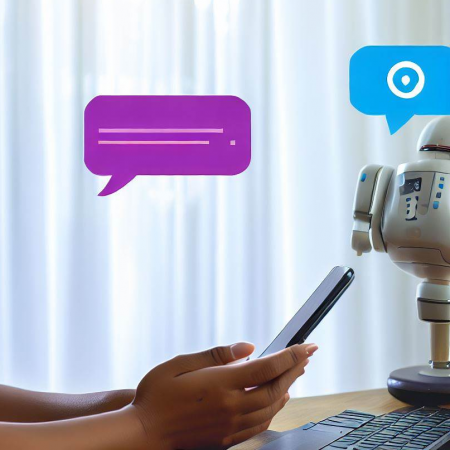In the last week of September 2024, millions of Instagram users posted certain text to their accounts. The idea? To avoid the plague of artificial intelligence (AI) online…
“Goodbye Meta AI”, the message said, referring to the social media giant’s parent company, before continuing along the lines of users not giving Meta or anyone else permission to use any of their photos, profile information, or personal data, with everyone who was anyone posting and sharing it. However, in their eagerness to combat the so-called AI encroachment, they all seemed to forget the fact that merely sharing memes or messages would not do anything to change their legal rights with respect to Meta, or any other tech platform for that matter.
Take OpenAI for instance, which claims that it would not have been possible to create ChatGPT without using copyrighted works. On the other hand, there’s Snapchat, which claims that using certain AI features might result in it putting your face in advertisements. Even LinkedIn is not far behind, using user resumes to polish up its AI model. Is there any way to opt out of these AI models online?
How AI Scrapes Data From Social Media
AI training models are consuming data faster than humans are producing it. They employ various methods to scrape the web for information and learn how to respond to questions. For instance, organizations use social media to find language data, helping large language models (LLMs) understand the latest trends and how people converse. AI chatbots like ChatGPT pull information from the web and use it to formulate answers to questions.
Companies even use AI to capture people’s social media posts for targeted advertisements, learning more about them from their likes and posts. These models rely on unstructured data from social media, including videos, images, and text, using techniques like computer vision and natural language processing to categorize and understand data. The idea is to reach the user, learn more about them, and use AI to figure out what appeals to them, even if the question of AI vs ethics remains.
However, social media is chaotic, spanning multiple contexts, languages, and more. Thus, AI cannot learn anything accurately, leading to it easily misinterpreting what it sees.

Opting Out Of AI Training
Is opting out of AI training practically possible? Well, it is partially possible, at the very most. Firstly, opt-out settings vary wildly between various platforms. Moreover, not all platforms offer these opt-out options, with more details on how individual platforms use your data buried in terms of services and privacy policies.
Take Discord, for instance, which has made tons of missteps since it first debuted, with some of its features even called out for “spying” on users. It even saw a massive data leak from its group chats in early 2024. Its newest end-to-end encryption feature, DAVE protocol, offers some level of control over your personal interactions and information.
Under its “Privacy & Safety” settings, you will find “How we use your data”, where you can turn “Use data to customize my Discord experience” and “Use data to improve Discord” off. LinkedIn is bolder, having outlined how it uses personal data for generative AI. Under the “How LinkedIn uses your data” tab under its “Data Privacy” section, you can toggle the option for “Data for Generative AI Improvement” off. However, it will not change if the AI models used your data in the past, only making that change for the future.
Meta outrightly claims that it might use public Instagram and Facebook posts, audio, profile photos, and comments to train AI systems, including its own AI chatbot Meta AI. While making your account private is an option, it does not exclude anything you might share on any public group. Moreover, the opt-out settings are different for all Meta apps, including WhatsApp, Facebook, and Instagram. Reddit is slightly trickier as it is a public platform, so users cannot opt out of sharing public posts. What’s more, Reddit’s privacy policy states that users are consenting to their shared content being available to train AI models, with deals in place to do so with Google’s Vertex AI.
Snapchat, with its highest number of users hailing from India, not only has a “My Selfie” feature but also an AI chatbot, which allows users to get AI-generated images from their selfies. Snapchats terms explicitly state that these images can be employed to develop and train machine learning (ML) models and in advertisements too. You can toggle “See My Selfie in Ads” off under the “My Selfie” feature in the “My Account” tab. Plus, you can also go to “Clear Data” under “Privacy Controls”, with the option to “Clear My AI Data”.
However, it is X (formerly Twitter) which is seeing the largest exodus of users since Elon Musk came to its helm. X’s updated terms of service, which went into effect on November 15th, 2024, state that X will use any data users post to train AI models and its own AI bot, Grok. While some users might still be able to see an opt-out option, it might mean nothing legally, and Grok will still be able to feed off your posts, likes, and maybe even private messages.
If you feel that this might mean that speech is no longer free, then it probably is. While almost every website has opt-out options, it does not mean that it will not trawl your data. As the practice of invasive data harvesting reaches its natural and inevitable conclusion, the only move here is not to play and accept the unfortunate consequence that not participating in new technology is probably the only way to limit your data’s reach — because nothing on the Internet is ever forgotten.
In case you missed:
- The Era of Oversharing Online: Data Privacy Concerns
- Should I Use An Anonymous Crypto Wallet?
- The Ethics of AI in Healthcare
- Keeping Your Tech Tidy: Tips For Data Backup And Safety
- Neural Networks vs AI – Decoding the Differences
- Studio Ghibli And The Endless Craze Of Digital Fantasies
- Phantom Wallet: The Fastest-Growing Crypto Wallet
- All About DeepSeek, the AI Disruptor
- The Internet’s AI Slop Problem
- Password Practices For A Safe Digital Presence













